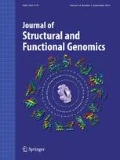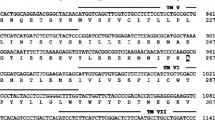Abstract
Nuclear hormone receptors form one evolutionary related super-family of proteins, which mediate the interaction between hormones (or other ligands) and gene expression in animals. Early phylogenetic analyses showed two main periods of gene duplication which gave rise to present-day diversity in most animals: one at the origin of the family, and another specifically in vertebrates. Moreover this second period is composed itself by, probably, two rounds of duplication, as proposed by Susumu Ohno at the origin of vertebrates. There are indeed often two, three or four vertebrate orthologs of each invertebrate nuclear receptor, in accordance with this theory. The complete genome of Drosophila melanogaster contains 21 nuclear receptors, compared to 49 in the human genome. In addition, many nuclear receptors have more paralogs in the zebrafish than in mammals, and a genome duplication has been proposed at the origin of ray-finned fishes. Nuclear receptors are a very good model to investigate the dating and functional role of these duplications, since they are dispersed in the genome, allow robust phylogenetic reconstruction, and are functionnaly well characterized, with different adaptations for different paralogs. We illustrate this with examples from differents nuclear receptors and different groups of species.
Similar content being viewed by others
References
Adams, M.D., Celniker, S.E., Holt, R.A., Evans, C.A., Gocayne, J.D., Amanatides, P.G., Scherer, S.E., Li, P.W., Hoskins, R.A., Galle, R.F., George, R.A., Lewis, S.E., Richards, S., Ashburner, M., Henderson, S.N., Sutton, G.G., Wortman, J.R., Yandell, M.D., Zhang, Q., Chen, L.X., Brandon, R.C., Rogers, Y.H., Blazej, R.G., Champe, M., Pfeiffer, B.D., Wan, K.H., Doyle, C., Baxter, E.G., Helt, G., Nelson, C.R., Gabor, G.L., Abril, J.F., Agbayani, A., An, H.J., Andrews-Pfannkoch, C., Baldwin, D., Ballew, R.M., Basu, A., Baxendale, J., Bayraktaroglu, L., Beasley, E.M., Beeson, K.Y., Benos, P.V., Berman, B.P., Bhandari, D., Bolshakov, S., Borkova, D., Botchan, M.R., Bouck, J., et al. (2000). The genome sequence of drosophila melanogaster. Science 287, 2185-2195.
Amero, S.A., Kretsinger, R.H., Moncrief, N.D., Yamamoto, K.R. and Pearson, W.R. (1992). The origin of nuclear receptor proteins: A single precursor distinct from other transcription factors. Mol. Endocrinol. 6, 3-7.
Amores, A., Force, A., Yan, Y.L., Joly, L., Amemiya, C., Fritz, A., Ho, R.K., Langeland, J., Prince, V., Wang, Y.L., Westerfield, M., Ekker, M. and Postlethwait, J.H. (1998). Zebrafish hox clusters and vertebrate genome evolution. Science 282, 1711-1714.
Caron, H., van Schaik, B., van der Mee, M., Baas, F., Riggins, G., van Sluis, P., Hermus, M.-C., van Asperen, R., Boon, K., Voûte, P.A., Heisterkamp, S., van Kampen, A. and Versteeg, R. (2001). The human transcriptome map: Clustering of highly expressed genes in chromosomal domains. Science 291, 1289-1292.
Desvergne, B. and Wahli, W. (1999) Peroxisome proliferator-activated receptors: nuclear control of metabolism. Endocrine Rev. 20, 649-688.
Dunham, I., Shimizu, N., Roe, B.A., Chissoe, S., Hunt, A.R., Collins, J.E., Bruskiewich, R., Beare, D.M., Clamp, M., Smink, L.J., Ainscough, R., Almeida, J.P., Babbage, A., Bagguley, C., Bailey, J., Barlow, K., Bates, K.N., Beasley, O., Bird, C.P., Blakey, S., Bridgeman, A.M., Buck, D., Burgess, J., Burrill, W.D., O'Brien, K.P. and et al. (1999). The DNA sequence of human chromosome 22. Nature 402, 489-495.
Escriva, H., Delaunay, F. and Laudet, V. (2000). Ligand binding and nuclear receptor evolution. BioEssays 22, 717-727.
Escriva, H., Holland, N.D., Gronemeyer, H., Laudet, V. and Holland, L.Z. (2002a). The retinoic acid signaling pathway regulates anterior/posterior patterning in the nerve cord and pharynx of amphioxus, a chordate lacking neural crest. Development, in press.
Escriva, H., Manzon, L., Youson, J., Laudet, V. (2002b) Analysis of lamprey and hagfish genes reveals a complex history of gene duplications during early vertebrate evolution. Mol. Biol. Evol., 19, 1440-1450.
Escriva, H., Safi, R., Hänni, C., Langlois, M.-C., Saumitou-Laprade, P., Stehelin, D., Capron, A., Pierce, R. and Laudet, V. (1997). Ligand binding was aquired during evolution of nuclear receptors. Proc. Natl. Acad. Sci. USA 94, 6803-6808.
Fairclough, L. and Tata, J.R. (1997) An immunocytochemical analysis of the expression of thyroid hormone receptor alpha and beta proteins during natural and thyroid hormone-induced metamorphosis in Xenopus. Dev. Growth Differ. 39, 273-283.
Force, A., Lynch, M., Pickett, F.B., Amores, A., Yan, Y.-l. and Postlethwait, J. (1999). Preservation of duplicate genes by complementary, degenerative mutations. Genetics 151, 1531-1545.
Hattori, M., Fujiyama, A., Taylor, T.D., Watanabe, H., Yada, T., Park, H.S., Toyoda, A., Ishii, K., Totoki, Y., Choi, D.K., Soeda, E., Ohki, M., Takagi, T., Sakaki, Y., Taudien, S., Blechschmidt, K., Polley, A., Menzel, U., Delabar, J., Kumpf, K., Lehmann, R., Patterson, D., Reichwald, K., Rump, A., Schillhabel, M., Schudy, A., Zimmermann, W., Rosenthal, A., Kudoh, J., Schibuya, K., Kawasaki, K., Asakawa, S., Shintani, A., Sasaki, T., Nagamine, K., Mitsuyama, S., Antonarakis, S.E., Minoshima, S., Shimizu, N., Nordsiek, G., Hornischer, K., Brant, P., Scharfe, M., Schon, O., Desario, A., Reichelt, J., Kauer, G., Blocker, H., Ramser, J., Beck, A., Klages, S., Hennig, S., Riesselmann, L., Dagand, E., Haaf, T., Wehrmeyer, S., Borzym, K., Gardiner, K., Nizetic, D., Francis, F., Lehrach, H., Reinhardt, R. and Yaspo, M.L. (2000). The DNA sequence of human chromosome 21. Nature 405, 311-319.
Holland, P. (2002) More genes in vertebrates? In Genome Evolution, (Eds. Meyer, A. Meyer and van de Peer, Y.), Kluwer Academic Publishers, Dordrecht, in press.
Hughes, A.L. and Friedman, R. (2002) 2R or not 2R: testing hypotheses of genome duplication in early vertebrates. In Genome Evolution (Eds. Meyer, A. and van de Peer, Y.), Kluwer Academic Publishers, Dordrecht, in press.
Laudet, V. (1997). Evolution of the nuclear receptor superfamily: Early diversification from an ancestral orphan receptor. J. Mol. Endocrinol. 19,207-226.
Laudet, V. and Gronemeyer, H. (2002) The Nuclear Receptors Factsbook, Academic Press, London.
Laudet, V., Hänni, C., Coll, J., Catzeflis, C. and Stéhelin, D. (1992). Evolution of the nuclear receptor gene family. EMBO J. 11, 1003-1013.
Le Jossic, C. and Michel, D. (1998). Striking evolutionary conservation of a cis-element related to nuclear receptor target sites and present in tr2 orphan receptor genes. Biochem. Biophys. Res. Commun. 245, 64-69.
Lundin, L.-G., Larhammar, D. et al. (2002) Numerous groups of chromosomal regional paralogies strongly indicate two genome doublings at the root of vertebrates. In Genome Evolution (Eds. Meyer, A. and van de Peer, Y.), Kluwer Academic Publishers, Dordrecht, in press.
Maglich, J.M., Sluder, A.E., Guan, X., Shi, Y., McKee, D.D., Carrick, K., Kamdar, K., Willson, T.M. and Moore, J.T. (2001). Comparison of complete nuclear receptor sets from the human, Caenorhabditis elegans and Drosophila genomes. GenomeBiology. com 2, research0029.0021-0027.
Málaga-Trillo, E. and Meyer, A. (1) Genome duplications and accelerated evolution of Hox genes and cluster architecture in teleost fishes. Amer. Zool., 41: 676-686.
Mendonça, R.L., Escriva, H., Vanacker, J.-M., Bouton, D., Delannoy, S., Pierce, R., Laudet, V. (1999) Nuclear hormone receptors and evolution. Amer. Zool. 39, 704-713.
Nuclear Receptors Nomenclature Committee (1999). A unified nomenclature system for the nuclear receptor superfamily. Cell 97, 161-163.
Ohno, S. (1970) Evolution by Gene Duplication. Springer-Verlag, New York, NY.
Postlethwait, J.H., Woods, I.G., Ngo-Hazelett, P., Yan, Y.L., Kelly, P.D., Chu, F., Huang, H., Hill-Force, A. and Talbot, W.S. (2000). Zebrafish comparative genomics and the origins of vertebrate chromosomes. Genome Res. 10, 1890-1902.
Robinson-Rechavi, M., Marchand, O., Escriva, H., Bardet, P.-L., Zelus, D., Hughes, S. and Laudet, V. (2001a). Euteleost fish genomes are characterized by expansion of gene families. Genome Res. 11, 781-788.
Robinson-Rechavi, M., Carpentier, A.-S., Duffraisse, M. and Laudet, V. (2001b). How many nuclear hormone receptors in the human genome? Trends Genet. 17, 554-556.
Robinson-Rechavi, M., Marchand, O., Escriva, H. and Laudet, V. (2001c). An ancestral whole-genome duplication may not have been responsible for the abundance of duplicated fish genes. Curr. Biol. 11, R458-R459.
Robinson-Rechavi, M., Marchand, O., Escriva, H. and Laudet, V. (2001d). Re: Revisiting recent challenges to the ancient fishspecific genome duplication hypothesis. Curr. Biol. 11, R1007-R1008.
Shimeld, S.M. (1996) Retinoic acid, HOX genes and the anterior posterior axis in chordates. BioEssays 18, 613-616.
Suga, H., Koyanagi, M., Hoshiyama, D., Ono, K., Iwabe, N., Kuma, K. and Miyata, T. (1999). Extensive gene duplication in the early evolution of animals before the parazoan-eumetazoan split demonstrated by g proteins and protein tyrosine kinases from sponge and hydra. J. Mol. Evol. 48, 646-653.
Taylor, J.S., Van de Peer, Y., Braasch, I. and Meyer, A. (2001a). Comparative genomics provides evidence for an ancient genome duplication event in fish. Phil. Trans. R. Soc. Lond. Ser. B 356, 1661-1679.
Taylor, J.S., van de Peer, Y. and Meyer, A. (2001b). Revisiting recent challenges to the ancient fish-specific genome duplication hypothesis. Curr. Biol. 11, R1005-R1007.
Thornton, J.W. (2001). Evolution of vertebrate steroid receptors from an ancestral estrogen receptor by ligand exploitation and serial genome expansions. Proc. Natl. Acad. Sci. USA 98, 5671-5676.
Thornton, J.W. and Desalle, R. (2000). A new method to localize and test the significance of incongruence: Detecting domain shuffling in the nuclear receptor superfamily. Syst. Biol. 49, 183-201.
Wicker, N., Perrin, G.R., Thierry, J.C. and Poch, O. (2001). Secator: A program for inferring protein subfamilies from phylogenetic trees. Mol Biol Evol 18, 1435-1441.
Yamano, K. and Miwa, S. (1998) Differential gene expression of thyroid hormone receptor ? and ? in fish development. Gen. Comp. Endocrinol. 109, 75-85.
Author information
Authors and Affiliations
Corresponding author
Rights and permissions
About this article
Cite this article
García, H.E., Laudet, V. & Robinson-Rechavi, M. Nuclear receptors are markers of animal genome evolution. J Struct Func Genom 3, 177–184 (2003). https://doi.org/10.1023/A:1022638706822
Issue Date:
DOI: https://doi.org/10.1023/A:1022638706822




